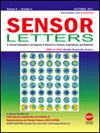A Dynamic Routing Path Reduction Protocol in Underwater Wireless Sensor Network
引用次数: 1
Abstract
Recently, underwater wireless sensor networks (UWSNs) have emerged as a promising networking technique for various underwater applications. An energy efficient routing protocol plays a vital role in data transmission and practical applications. However, due to the specific characteristics of UWSNs, such as dynamic structure, narrow bandwidth, rapid energy consumption, and high latency, it is difficult to build routing protocols for UWSNs. In this paper, We propose a location aware opportunistic routing algorithm for under water communication. We analyse three main problems in under water communication; forwarding set selection forwarding set ranking to handle FSR problem, void handling method to handle the communication void (CV) and overhear and suppression procedure to deal with duplicate forwarding suppression (DFS) problems. The importance of the work is that it will provide an energy efficient pressure based opportunistic routing algorithm for wireless sensor network (UWSN). The routing protocol has been implemented in the ns2-AqaSim simulator and testbed for measurement of the performance metrics of the UASN. The simulation results showed that the novel routing method throughput has increased by 16%, 33%, and 55% when compared with SUN, VBF and DF method. It can effectively improve the throughput of nodes, balance positioning performance as well as energy use efficiency, and optimize the positioning result of UWASN.水下无线传感器网络中的动态路由路径缩减协议
近年来,水下无线传感器网络(UWSNs)作为一种很有前途的网络技术出现在各种水下应用中。高效节能的路由协议在数据传输和实际应用中起着至关重要的作用。但是,由于UWSNs具有结构动态、带宽窄、能耗快、时延高等特点,使得UWSNs路由协议的构建非常困难。本文提出了一种适合水下通信的位置感知机会路由算法。分析了水下通信中存在的三个主要问题;转发集选择转发集排序处理FSR问题,无效处理方法处理通信无效(CV)和监听抑制程序处理重复转发抑制(DFS)问题。这项工作的重要性在于,它将为无线传感器网络(UWSN)提供一种节能的基于压力的机会路由算法。该路由协议已在ns2-AqaSim模拟器和测试平台上实现,用于测量usasn的性能指标。仿真结果表明,与SUN、VBF和DF方法相比,该方法的吞吐量分别提高了16%、33%和55%。它可以有效地提高节点吞吐量、平衡定位性能和能源利用效率,优化unun的定位结果。
本文章由计算机程序翻译,如有差异,请以英文原文为准。
求助全文
约1分钟内获得全文
求助全文
来源期刊

Sensor Letters
工程技术-电化学
自引率
0.00%
发文量
0
审稿时长
6 months
期刊介绍:
The growing interest and activity in the field of sensor technologies requires a forum for rapid dissemination of important results: Sensor Letters is that forum. Sensor Letters offers scientists, engineers and medical experts timely, peer-reviewed research on sensor science and technology of the highest quality. Sensor Letters publish original rapid communications, full papers and timely state-of-the-art reviews encompassing the fundamental and applied research on sensor science and technology in all fields of science, engineering, and medicine. Highest priority will be given to short communications reporting important new scientific and technological findings.
 求助内容:
求助内容: 应助结果提醒方式:
应助结果提醒方式:


